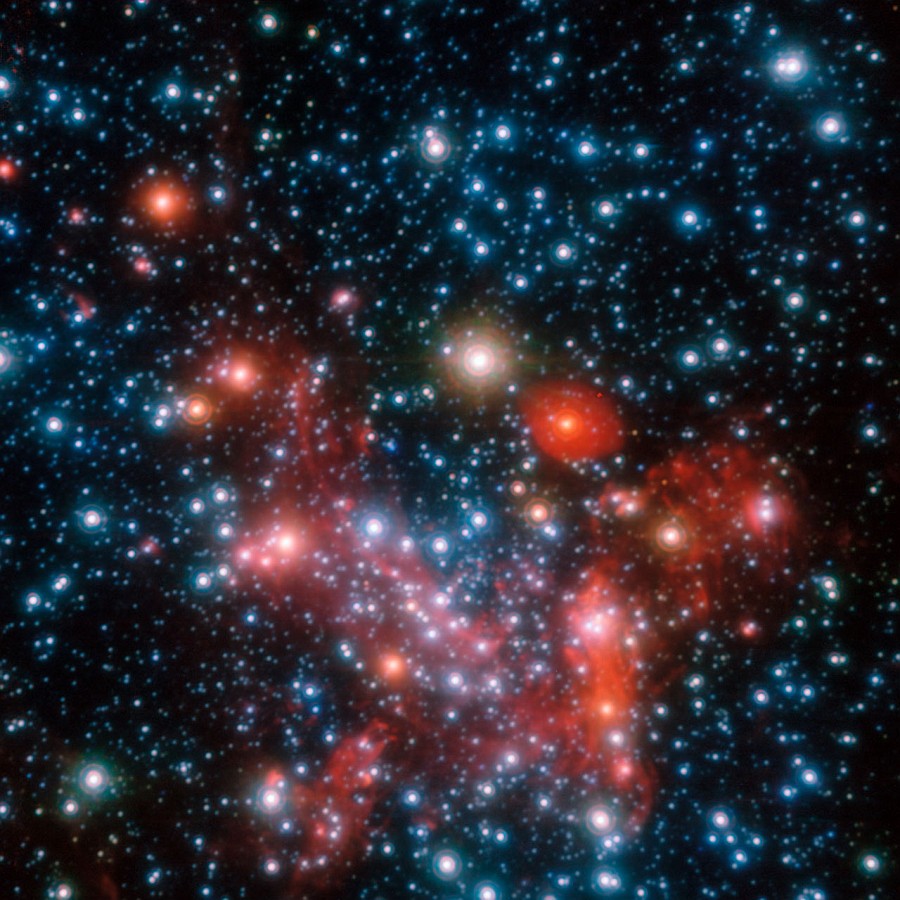 | |
|  |
|
|
| |
| Aurora Borealis, the VLT, and even A* | Sep 06, 2011 1:55 AM PDT | url |
| | |
Added 1 new A* page:A very pretty time-lapse video of the northern lights:
http://vimeo.com/21294655
You may recognize the uploader there as the same one responsible for the neat video of the Milky Way spinning in the night sky that I posted a while back.
The northern lights, or aurora borealis ("named after the Roman goddess of dawn, Aurora, and the Greek name for the north wind, Boreas, by Pierre Gassendi in 1621") are what happen when charged particles from space—mostly from the Sun, I should think—zoom in along the lines of the Earth's magnetosphere and crash into the upper atmosphere at the planet's poles. There are also southern lights—"aurora australis," to use the old tongue—and you can see in an interesting superimposed video on NASA's Earth Observatory site (Quicktime format :P) that they, like their northern mirror image, form a pulsating hoop around the pole. And there are aurorae on other planets, as I've shown before, for instance here.
They are neat.
Our second video today is a time-lapse of the skies wheeling above the ESO's Very Large Telescope array high up in the mountains of Chile—lots of good views of the Milky Way:
https://www.youtube.com/watch?v=wFpeM3fxJoQ
One thing I thought was particularly nifty in that video is that you can see the VLT's laser star guide—the thin orange line—firing into the sky; it excites sodium atoms in the mesophere, about 90 km up, causing them to glow; this glow is used as a reference—an artificial star—for the telescope's sophisticated adaptive optics, which can then manipulate the incoming light from stars—or whatever the VLT is looking at—to correct for distortions caused by the atmosphere, having read the distortions very precisely from the known quantity of the light coming back from the laser-initiated glow.
But it's also fun to imagine it's shooting down incoming Klingon battle cruisers.
The supermassive black hole known as Sagittarius A*, of course, is located in the center of the Milky Way, and you could see it in that video, kinda, except that it's blocked by gas and dust, and also is probably nearly invisible a lot of the time anyway. But the VLT was one of the instruments used in the rather famous study of A* and the galactic core by the Max-Planck Institute that culminated in 2008 with this time-lapse footage showing the orbits of the stars closest to the center of our galaxy turning in tiny loops, which could only be due to the presence of a supermassive black hole—so that was pretty much the proof of A*'s existence.
Here's an ESO video sort of zooming in from a typical view of the Milky Way to those central stars. This is their article about the study and their part in it; I thought this quote from one of the lead Max Planck team members was interesting:
| The stars in the innermost region are in random orbits, like a swarm of bees," says Gillessen. "However, further out, six of the 28 stars orbit the black hole in a disc. In this respect the new study has also confirmed explicitly earlier work in which the disc had been found, but only in a statistical sense. Ordered motion outside the central light-month, randomly oriented orbits inside – that's how the dynamics of the young stars in the Galactic Centre are best described." |
And since every article needs a picture, here's a VLT photo of the galactic center in the near-infrared (the part of the infrared spectrum closest to visible light), with A* somewhere in there:

image by ESO/S. Gillessen et al. (source)
|
·····
|
|
|
